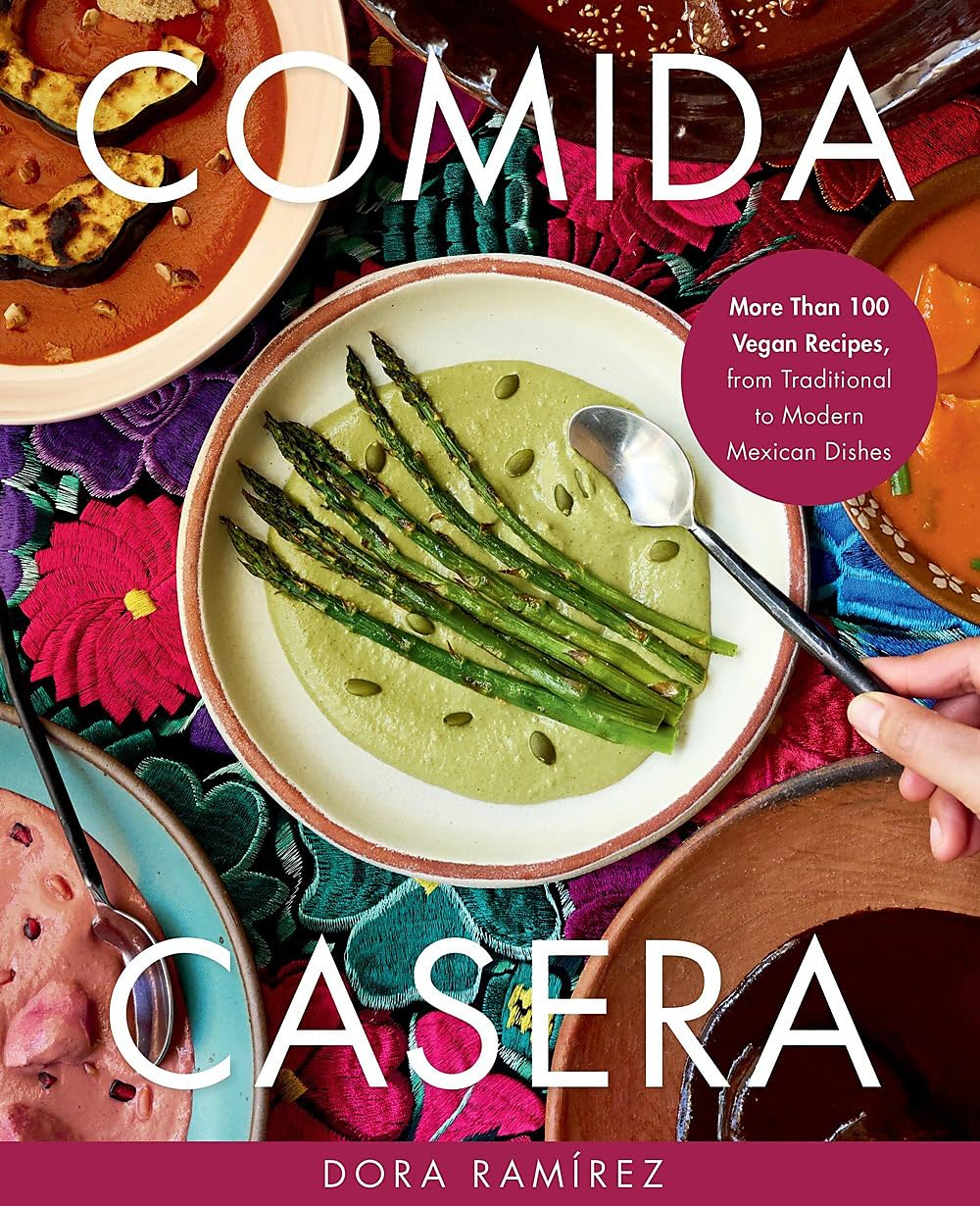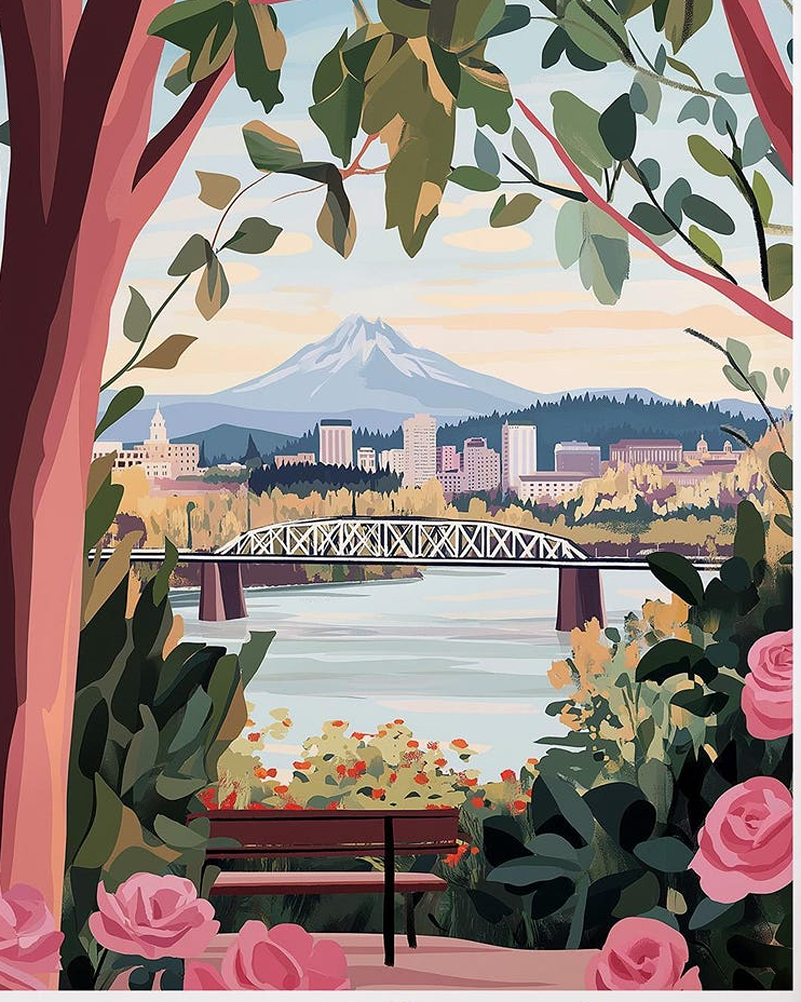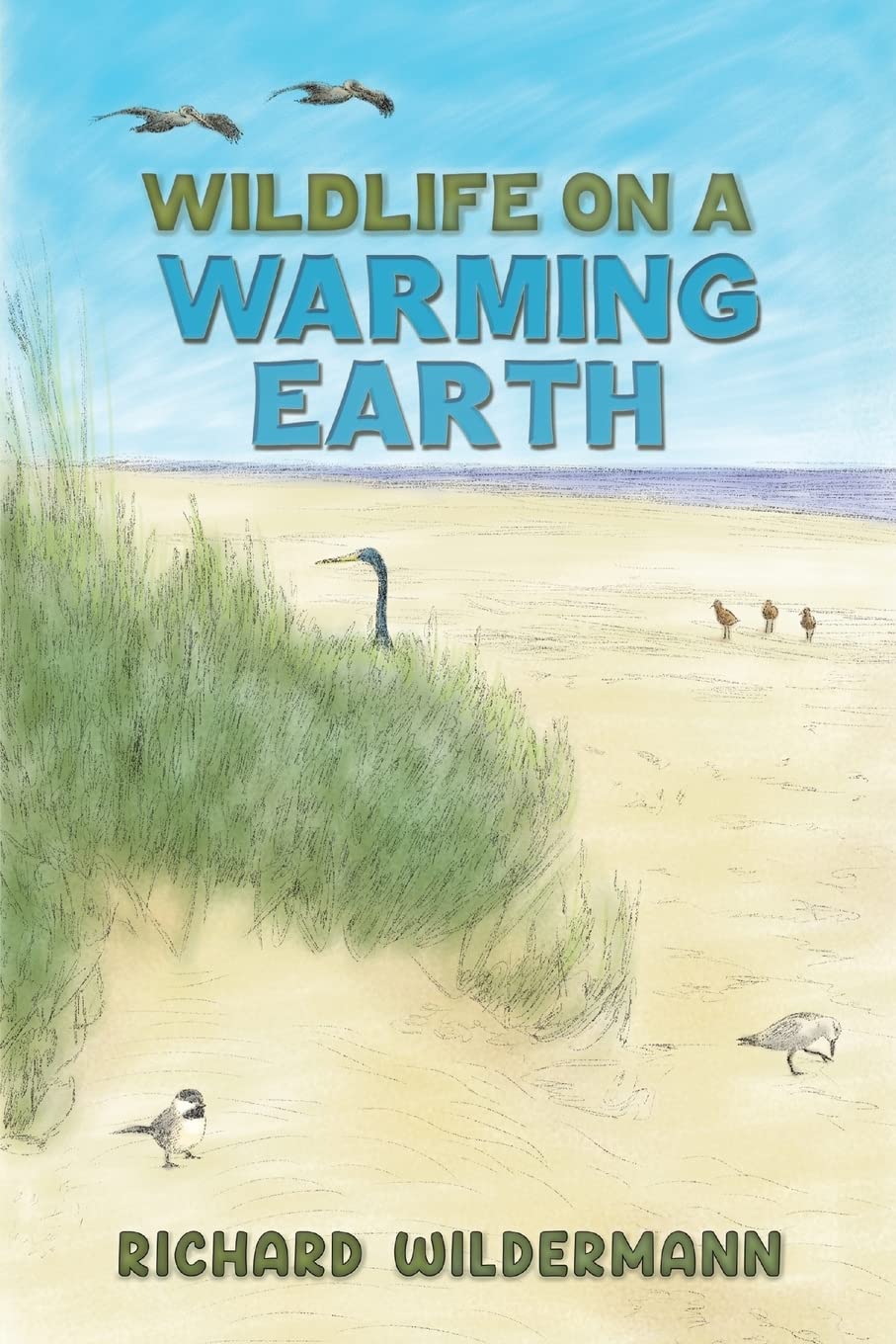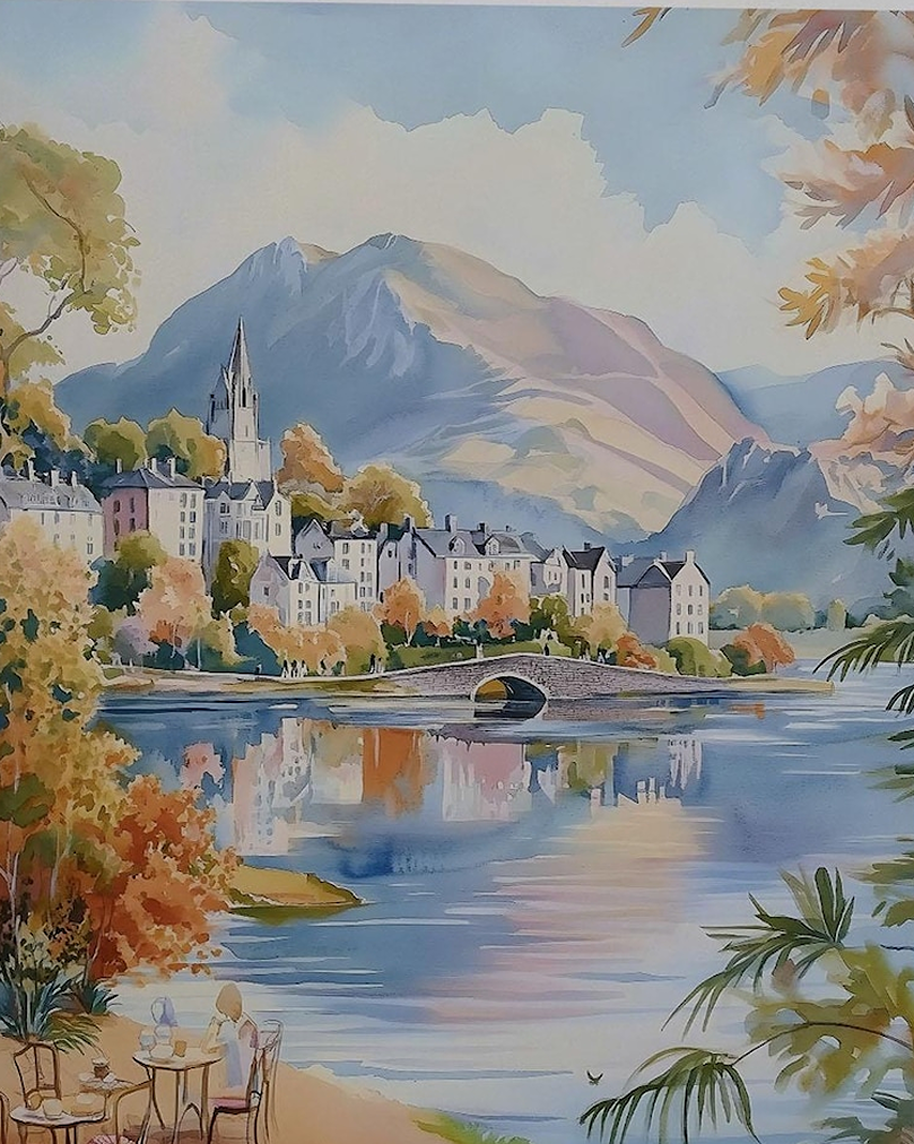Reasons to Read a Nature Poem Every Day!

I Am The Seed That Grew the Tree is a stunning large-format edition of nature poems by various writers. Enjoy a treasury of poems (one for every day of the year) in this gorgeous illustrated gift book. From Blake to Dickinson, and from Frost to Hardy, from Rossetti to Shakespeare and Wordsworth, there is a poem for everyone
The book features 366 poems, one for each day, including leap years. Each poem has been carefully picked to match the season, capturing the feel of crisp spring mornings, the shimmer of summer heat, autumn leaves and winter frost.
This daily format helps children and adults alike build a gentle routine and look forward to each new day with something meaningful to read.
A Happy Poem to Start Every Day

Nothing speaks to the heart like a poem. Even a few short words (just like a pretty picture) can say more than some MP banging on for hours about environmental issues (then voting to do the opposite).
A Happy Poem to Start Every Day offers poems to sooth or motivate, whether you wake up to the chirping of birds, or stumble out the door in a last minute rush. Take time for yourself each morning to boost your mood, with a happy poem to set yourself up for the day.
This book features one happy poem for each day of the year, to keep by your besides or on the kitchen counter, to read while your coffee brews. Or keep it in your rucksack or briefcase for the morning commute. Includes poems by John Keats to Rumi.
Here’s a poem from the book: Naga-Uta (inspired by Japanese short poems):
Clearest of clear days;
Frozen leaves under my feet,
Frost on bare branches,
Blue sky, smoke from the funnel
of a narrowboat,
and on the quiet river,
great slicks of pale gold sunlight
Wendy Cope
A Book on Poetry in the Natural World
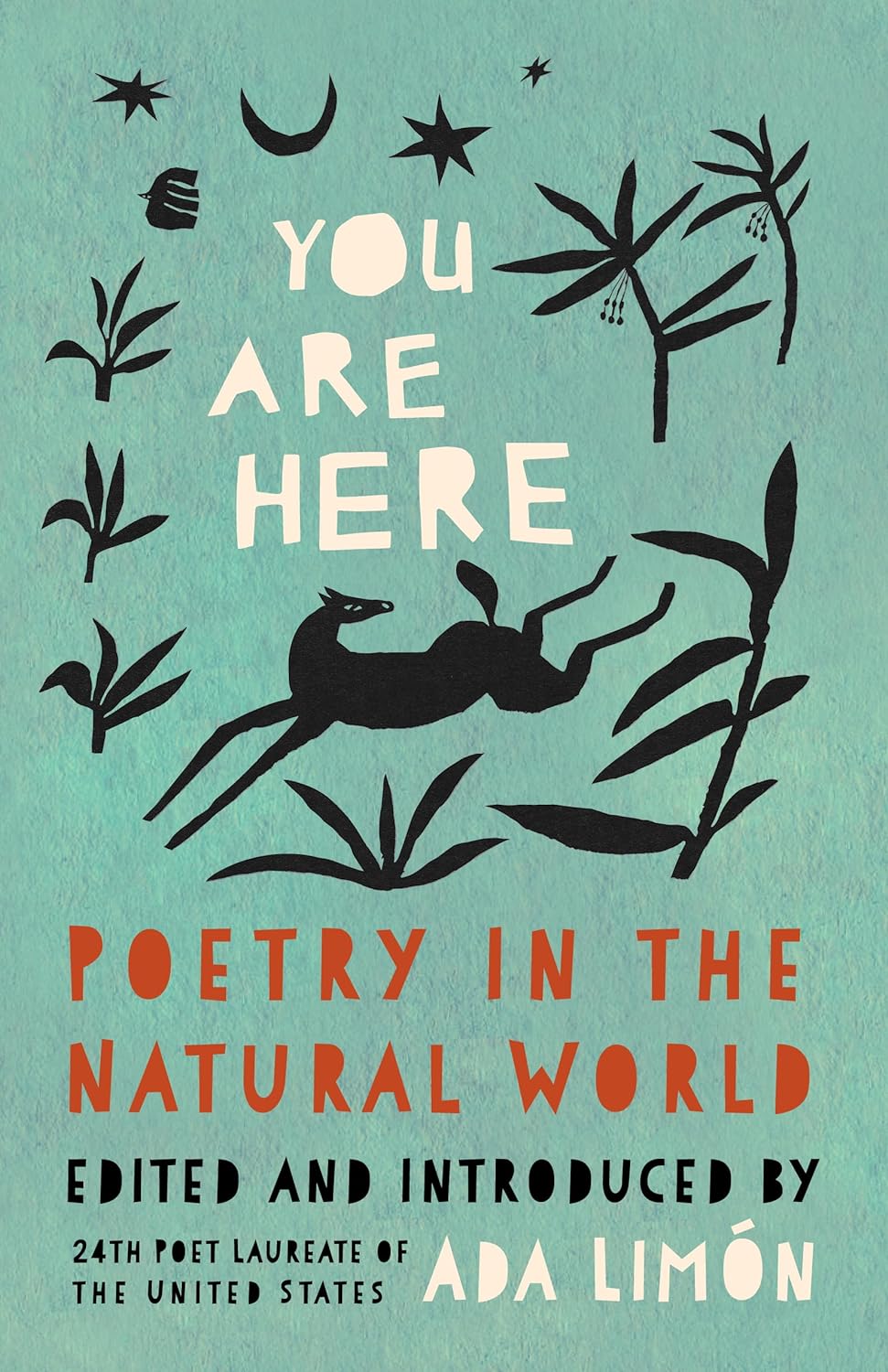
You Are Here: Poetry in the Natural World is published with the Library of Congress and edited by the Poet Laureate of the United States, a collection of poems reflecting our relationship with nature, by 50 celebrated contemporary writers.
Each poem engages with the author’s local landscape – from the breath-taking variety of flora in a national park to a lone tree flowering by a bus stop.
Poems are like trees. They let us breathe together. In each line break or stanza, there’s a place for us to breathe. Not unlike a forest, poems can be a place to stop and remember that we too are living.
W.S. Merwin wrote in his poem ‘Place’ that ‘On the last day of the world, I would want to plant a tree’. I think I would add that I would also like to write a poem. Maybe I’d even write a poem about a tree?’
A Book of Poems on the Animal Kingdom
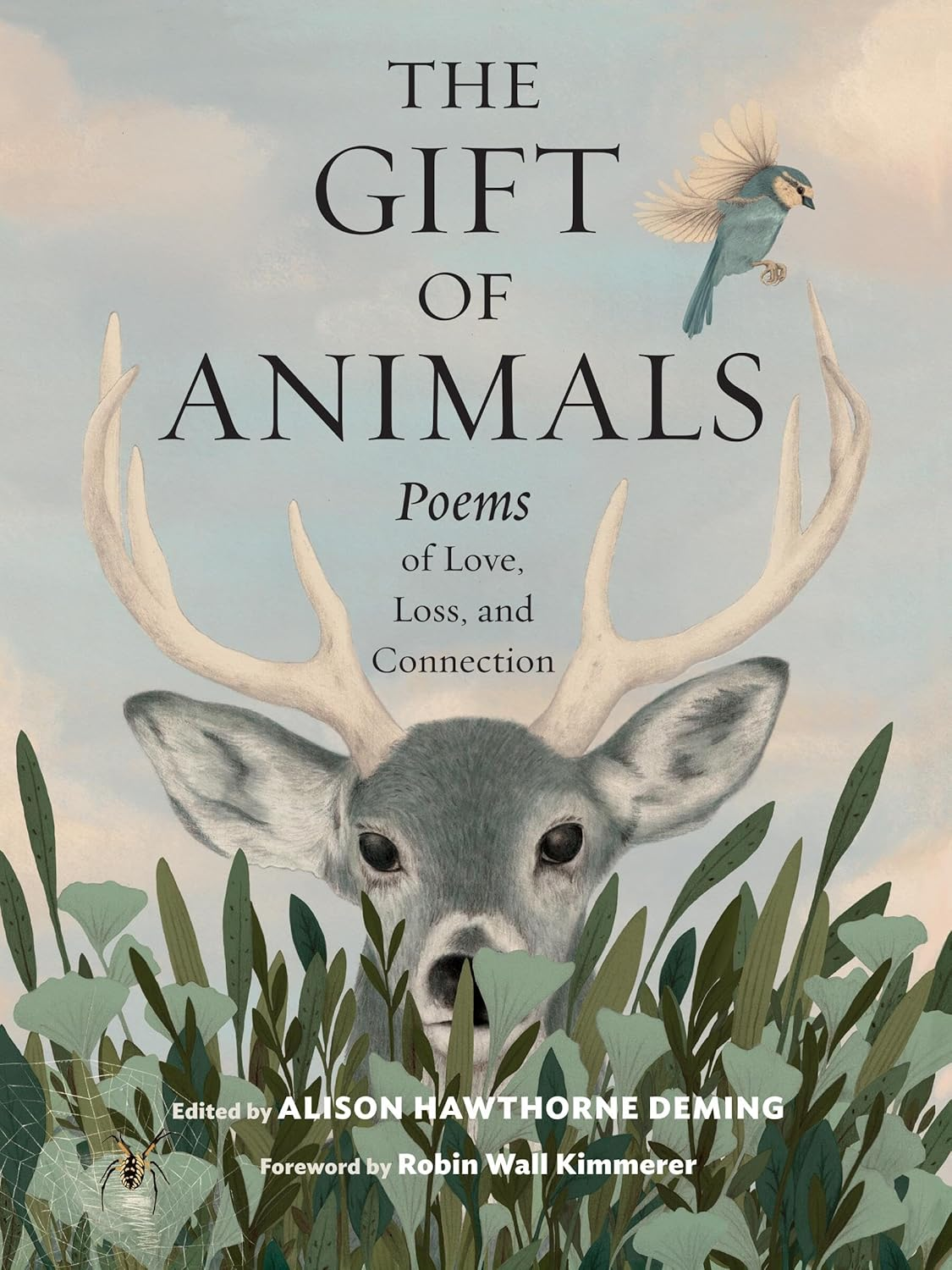
The Gift of Animals is a beautiful gift book of poems on the animal kingdom, from pets to wildlife and even reptiles.
Animals have long been a source of inspiration and companionship. And poems about them are amongst the oldest traditions in human culture.
This collection of contemporary poems adds to this ancient lineage:
- Celebrating other creatures for their beauty & intelligence
- Empathising over their suffering
- Hoping for their future
The presence of an animal is a gift. The loss of an animal is a grief.
To share such feelings through poetry, is to create a community of caring, for the creatures that accompany us on Earth.
The book includes poems by some of the world’s most beloved poets.
Brilliantly selected and meaningfully arranged, the poems unfold one after another. Kathleen Dean Moore
Alison Hawthorne Deming is a nature writer and former poet-in-residence at Milwaukee Public Library and Museum, and currently is Professor Emerita at University of Arizona, USA.
A Book of Children’s Poems on Nature
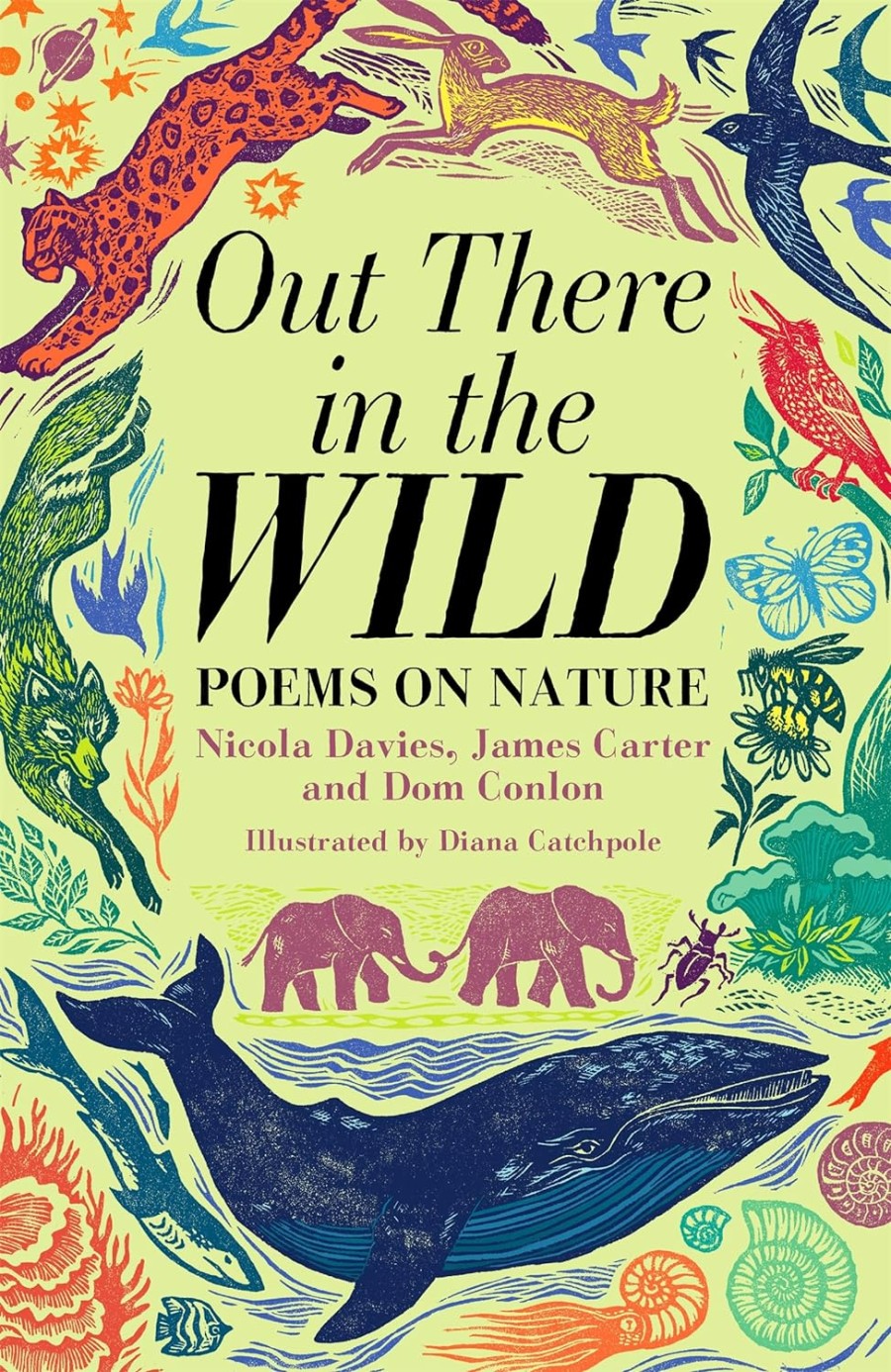
Out There In The Wild is a stunning volume of poetry to celebrate the natural world, illustrated by Diana Catchpole. Packed with poems about everything that lives in the sea and rivers, on land or in the sky.
Young readers will meet eagles and skylarks, tigers and elephants, foxes, rabbits, bats, bees and butterflies.
It’s easy to believe that humans are outside of nature. But we are part of nature. As much as the tree is for the woodlouse, or the soil is for the potato.
The Rhythm (by James)
There’s a rhythm out there
there’s a rhythm within
as the seasons turn
as the planets spin.It’s the call of the wild
It’s the breath of the world,
and it’s life so alive
that it has to be heard.It’s the sweep of the swoop
of the owl at dawn
It’s the dash of the fox
through the August cornIt’s the tug of the breeze
and the tree that it shakes
and the nest and the egg
and the crack as it breaks.It’s the river that rolls
as it picks up pace
It’s the moon and the sea
and those great grey waves.
Nature poetry holds a special place in children’s lives. It builds a lifelong bond with the outdoors, fills young minds with wonder, and teaches important lessons about the world. In a world where screens often take over, poems about fields, birds and seasons give children a gentle way to pause and notice what’s outside their window.
Simon Armitage: A Modern (Yorkshire) Poet Laureate

Simon Armitage is England’s present Poet Laureate, who grew up in (and still lives) in Yorkshire. A former probation officer, he has been a poet in residence at several universities, and often uses his poems to celebrate and help the natural world.
He surprisingly lost when appearing on Celebrity Mastermind on his chosen subject of the poetry of Ted Hughes, as they asked very difficult questions that threw him! The winner answered questions about a popular soap opera. He says next time he will choose the specialist subject of ‘What I watched on telly last night!’
Dwell is a beautifully illustrated collection of poems, also from Simon Armitage, inspired by the living creatures around us, and written at the Lost Gardens of Heligan in Cornwall, a landscape of woods, meadows and jungle.
Using riddle and folklore to animate a series of dwellings (from a squirrel’s drey to a beaver’s lodge), the distinction between human and animal are blurred, to create a vibrant account of non-stop stop-motion life’.
Also warning of the fragile nature of these spaces and their dwellers, due to familiar environmental threats. This book looks at the natural world that provides lasting homes, just as gardens can offer refuge for wildlife.
Simon Armitage’s Poems on Spring
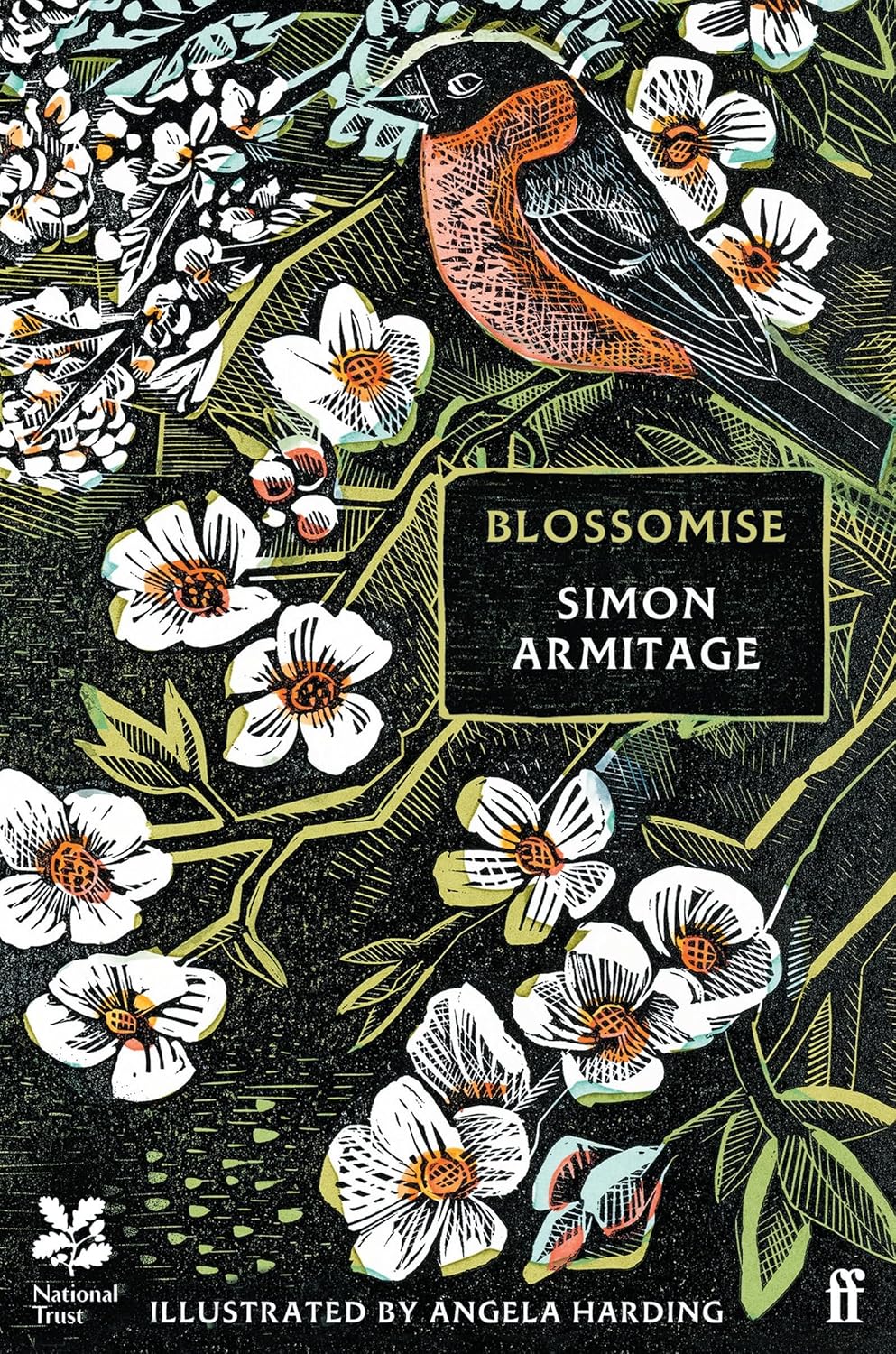
Blossomise is a collaboration between England’s poet Laureate and a talented printmaker, offering 21 beautiful poems to celebrate the spring and its blossom.
The book also has a serious note, looking at the demise of orchards which has led to less blossoming trees, so important for our planet, birds and wildlife. And our apples and pears!
Poetry is in debt to the environment, having had its money’s worth as a byword for beauty or a pretty backdrop. And poetry must speak up for nature, when it cannot speak for itself.
The Nature Poems of Emily Dickinson
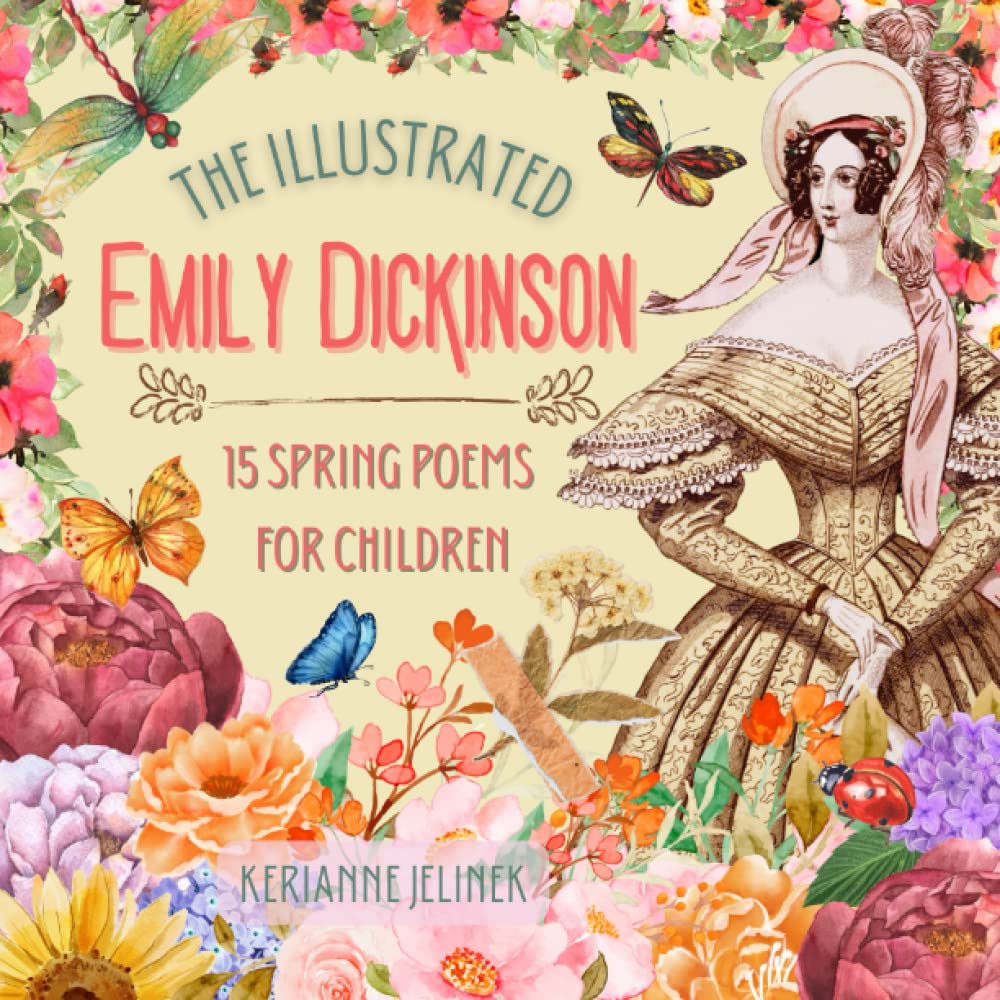
Perhaps one of the best-loved nature poets is American Emily Dickinson. The daughter of a US senator, this young beautiful woman (who never married) was a recluse, who shut herself away (when not gardening) to write romantic poems on nature.
In life she suffered from depression, anxiety and eye pain (difficult for a writer), which may well have been the reasons why she preferred to be alone. Despite her popularity today, just 10 of her poems were published during her lifetime.
It’s believed that after his wife’s death, a friend of her father’s perhaps had a secret romance with Emily, but there are no letters to prove this. Emily died from a stroke, just 55 years of age.
Dickinson valued her privacy. She kept to herself, rarely leaving her house in her later years, and often refused visitors. Her reclusive lifestyle has become almost legendary.
Yet her isolation helped her focus on writing, giving her the quiet she needed to create her best work. Her letters show she cared deeply about her friends and family, even if she saw them less often.
While Dickinson wrote around 1,800 poems, only a handful were published before she died. Those that did appear in print were often changed by editors who did not understand her new style.
She kept her poems in hand-sewn booklets and trusted her family to care for them. Most people only discovered the full range of her work after her death.
Dickinson’s poems are well-known for their dashes, irregular punctuation and capital letters where you don’t expect them. This style puzzled her early editors, who tried to “fix” it in print.
Although she kept her distance from crowds, Dickinson kept up intense friendships by letter, especially with Susan Gilbert Dickinson (her sister-in-law) and Thomas Wentworth Higginson (a writer and critic).
After Dickinson died in 1886, her younger sister Lavinia found the bundles of poems. Lavinia asked others for help publishing them, leading to the first collections in the 1890s.
‘Hope’ is the Thing with Feathers
This is one of Emily Dickinson’s best-known poems, which represents hope in the human soul, inspired by the strong-willed bird, that never gives up.
“Hope” is the thing with feathers –
That perches in the soul –
And sings the tune without the words –
And never stops – at allAnd sweetest – in the Gale – is heard –
And sore must be the storm –
That could abash the little Bird
That kept so many warm –I’ve heard it in the chillest land –
And on the strangest Sea –
Yet – never – in Extremity,
It asked a crumb – of me.
A Beautiful Nature Poem (on colours)

Despite her Italian parentage, Christina Rossetti was born and raised in England. All four children had good educations (her brother was also a poet). She was regarded as the finest poet of the Victorian era.
Christina was devoutly religious, causing her to refuse two offers of marriage. She led a reclusive life after one brother’s death, and died age just 64.
Despite never marrying, she wrote some of the greatest-ever love poems. And this poem on colours:
What is pink? a rose is pink
By a fountain’s brink.
What is red? a poppy’s red
In its barley bed.
What is blue? the sky is blue
Where the clouds float thro’.
What is white? a swan is white
Sailing in the light.
What is yellow? pears are yellow,
Rich and ripe and mellow.
What is green? the grass is green,
With small flowers between.
What is violet? clouds are violet
In the summer twilight.
What is orange? Why, an orange,
Just an orange!
Christina Rossetti was born in 1830 in London to a family steeped in art and literature. Her father, Gabriele Rossetti, was a political exile and a respected scholar, while her mother, Frances, encouraged a love of books at home.
Surrounded by creativity and strong ideas, Christina began writing poetry as a young child. The warmth and tension in her family home shaped her view of the world and gave her the emotional depth that runs through her work. She wrote the words to the Christmas carol ‘In the Bleak Midwinter’.

